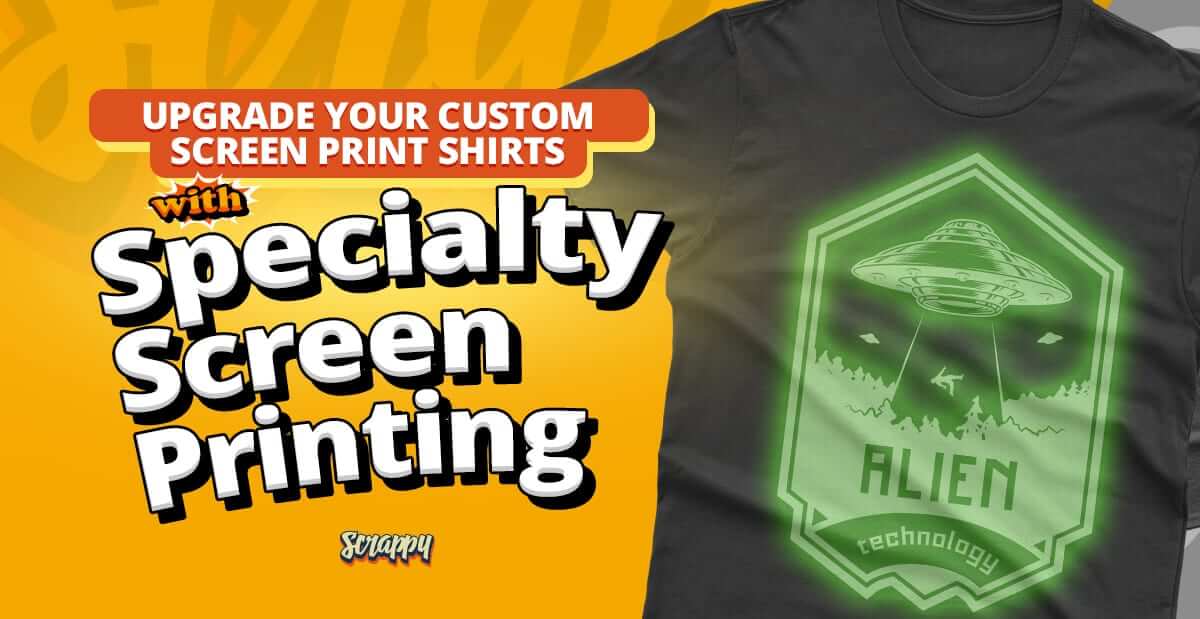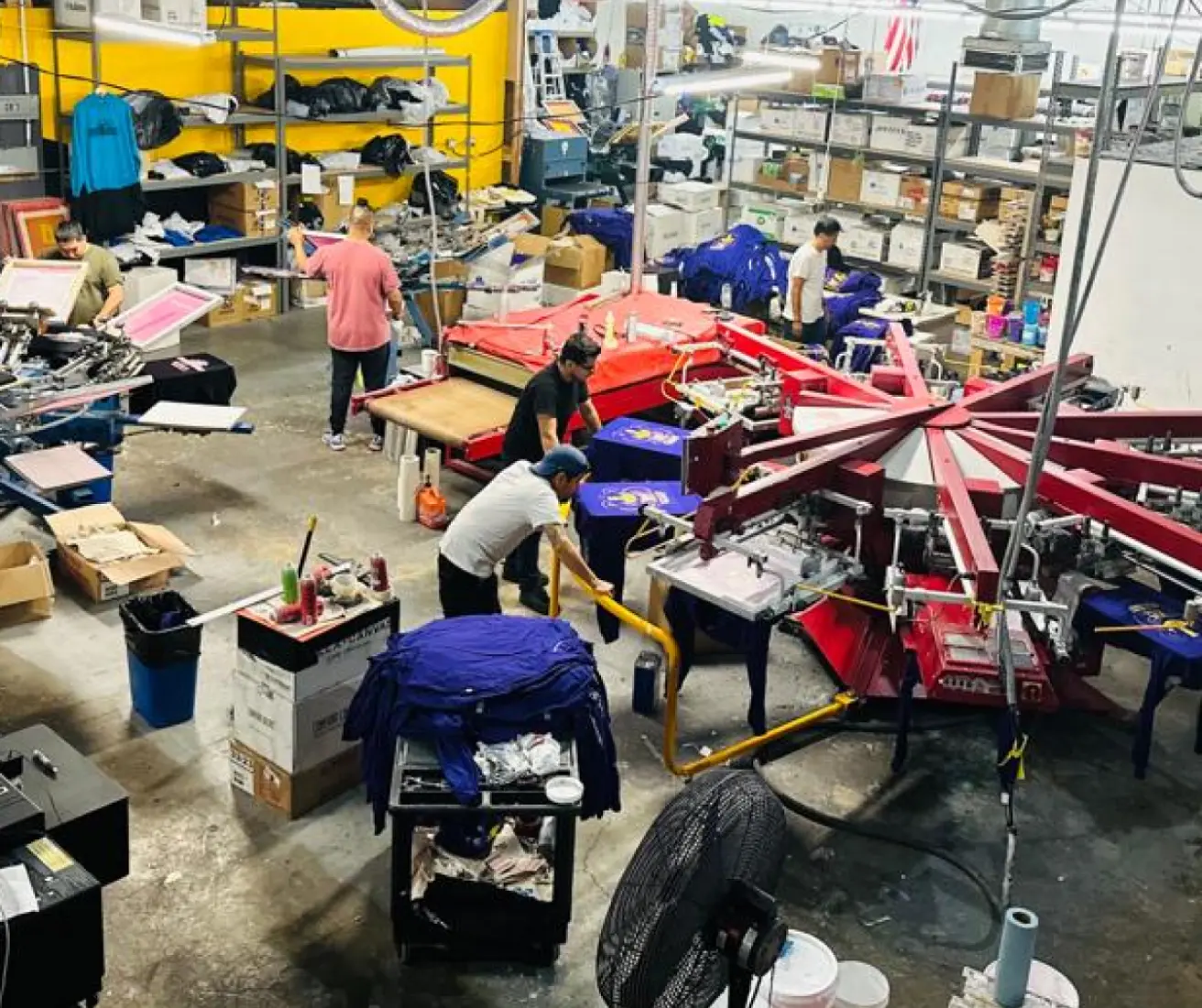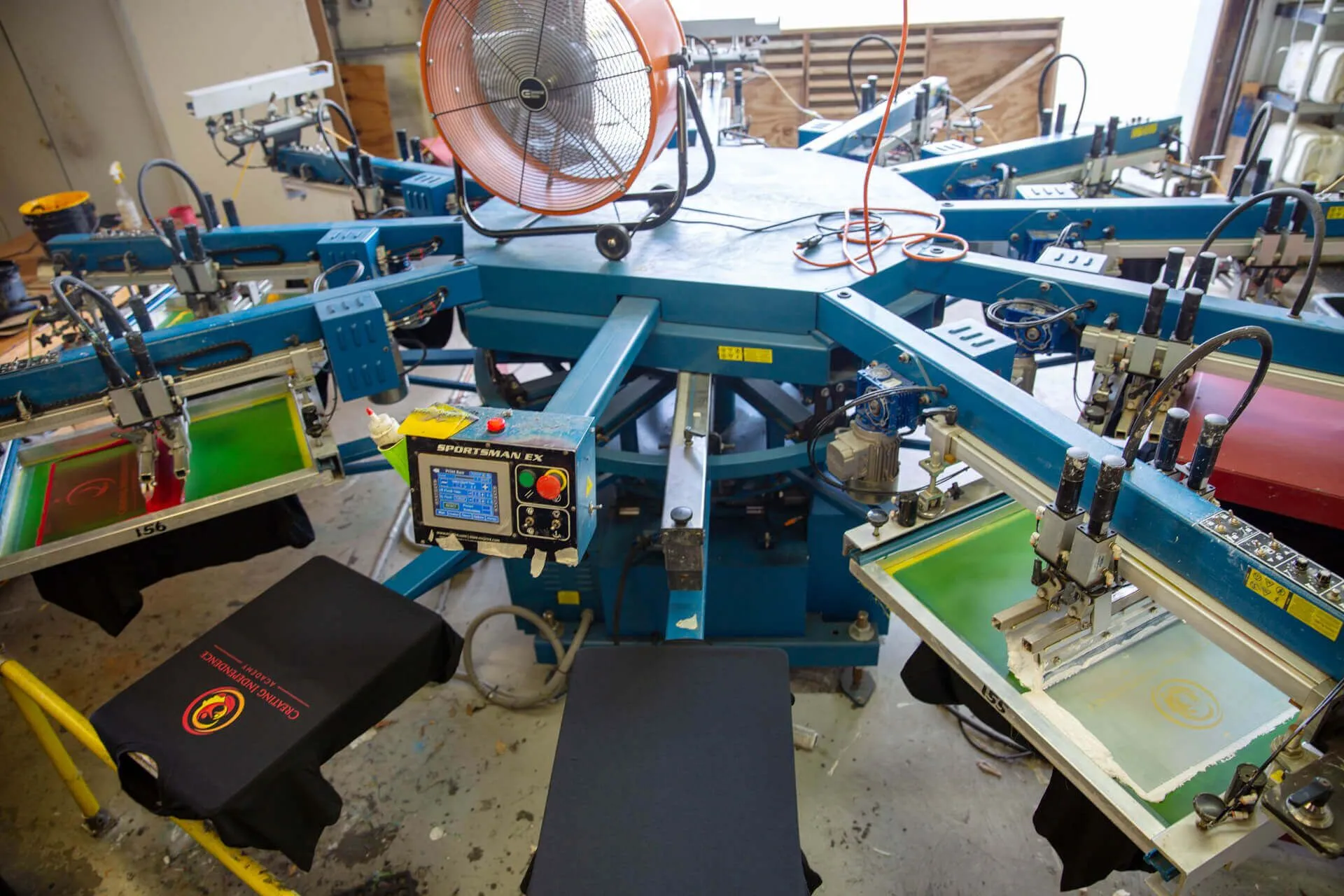High-End Silk Screen Printing for Premium Garments
High-End Silk Screen Printing for Premium Garments
Blog Article
Screen Printing Uncovered: Whatever You Required to Understand About T-Shirt and Garment Printing Methods
If you have actually ever wondered exactly how those vivid designs wind up on your preferred tee shirts, you remain in the appropriate place. Screen printing is a remarkable technique that integrates art with strategy, using endless possibilities for imagination. Recognizing the principles, from tools to ink choices, can significantly affect your outcomes. All set to discover the essential components that make screen printing an art form? Let's reveal the details that can boost your tasks.
The Basics of Display Printing: Just How It Functions
When you dive right into display printing, you'll find it's both a science and an art. At its core, screen printing involves producing a stencil, or display, that enables ink to travel through just in particular areas (screen printing kit). You begin by choosing your design and preparing your display with a light-sensitive emulsion. As soon as you expose this emulsion to light, it solidifies, leaving your style as an adverse area.
Placement the screen over the material, then use a squeegee to press ink via the display onto the garment. Each action is important, and understanding them will raise your screen printing skills, changing basic garments right into distinct, expressive items.
Sorts Of Display Printing Strategies
As soon as you comprehend the basics of display printing, it's time to discover the various methods that can raise your styles. One popular technique is conventional screen printing, where ink is pressed via a stenciled screen.
One more choice is plastisol printing, recognized for its sturdiness and brilliant shades, making it a favored for several brand names. Experiment with halftone printing to create gradient effects and complex designs.
Necessary Tools for Display Printing
To accomplish stunning cause display printing, having the best devices is basic. First, you'll need a sturdy screen printing structure, which holds the mesh that transfers your design onto the garment. Next off, buy high-quality squeegees; these are essential for applying ink equally throughout the screen. You'll likewise call for an excellent exposure system to develop your displays, in addition to a washout cubicle for cleansing them after use. A reputable warmth source, like a conveyor dryer or warm press, is critical for curing your prints to assure durability. Don't fail to remember a proper workspace, geared up with tables and storage for your materials. Lastly, safety gear, such as masks and gloves, will certainly keep you secure from chemicals and inks. With the right tools, you'll be well on your method to producing professional-quality prints.
Picking the Right Inks and Products
When choosing inks and products for screen printing, you require to take right into account the kind of ink that works ideal for your task. Consider textile compatibility to ensure your layouts look last and fantastic long. Discover environmentally friendly ink alternatives to make your printing procedure much more sustainable.
Sorts Of Screen Inks
Selecting the ideal display ink is necessary for attaining vibrant, durable prints that fulfill your task's needs. There are numerous kinds of screen inks to analyze. Plastisol ink is preferred for its versatility and ease of use, giving excellent color opacity on dark textiles. Water-based ink, on the various other hand, offers a softer feeling and is green, making it ideal for those looking to minimize their environmental effect. Release inks get rid of color from the textile, causing a soft, classic look yet require details handling. Specialized inks, such as glow-in-the-dark or metal, can add unique results to your styles. Examine your job requirements and select the ink that lines up best with your preferred end result.

Textile Compatibility Factors To Consider
Comprehending textile compatibility is essential for accomplishing top quality display prints, particularly since various materials respond uniquely to various inks. When picking inks, take into consideration the textile type-- cotton, polyester, or blends. For cotton, water-based inks work well, offering soft qualities and breathability. Polyester, on the various other hand, commonly calls for plastisol inks for much better attachment and vibrant shades. If you're publishing on blends, you may require to utilize a combination of both kinds. Always test your inks on example fabric to guarantee they adhere correctly and maintain shade honesty. Additionally, bear in mind that textile weight and texture can influence the last outcome, so picking the ideal ink and material combination is important for your task's success.
Eco-Friendly Ink Options
Green inks are coming to be a prominent selection for screen printers that wish to lessen their environmental impact while preserving quality. When choosing inks, consider water-based inks, which are much less damaging and easier to cleanse up contrasted to traditional solvents. These inks bond well with textiles, supplying vivid outcomes without toxic chemicals. You may additionally explore eco-solvent inks that use fewer unpredictable natural compounds (VOCs), making them a more secure option for both your wellness and the earth.
Additionally, try to find inks made from eco-friendly sources, such as soy or vegetable-based options. By selecting the best inks and materials, you'll not only create spectacular styles however likewise add to an extra sustainable printing procedure. Make the switch, and your prints will reflect your dedication to the setting!
Preparing Your Layout for Display Printing

File Format Requirements
To ensure your layout looks sharp and vivid on material, you'll need to pay close interest to file layout requirements for screen printing. Make certain your design has a transparent background to avoid unwanted white sides on your prints. Keep shade blog settings in mind; CMYK is common for screen printing, so transform your RGB makes appropriately.
Shade Splitting Up Strategies
Color splitting up is a vital action in preparing your style for screen printing, and grasping it can greatly enhance your print quality. You'll need to break your design into specific shades, as each shade requires a separate screen during printing. Begin by determining all the shades in your layout and develop layers each. You can make click here to read use of software program like Adobe Photoshop or Illustrator to separate and separate shades successfully. Be particular to save each layer as a different documents, normally in a layout like TIFF or PSD. This accuracy not only guarantees accurate shade representation but additionally enhances the printing process. By focusing on color splitting up, you'll accomplish specialist and lively cause your screen-printed garments.
Resolution and Dimension
Achieving the ideal lead to display printing starts with ensuring your design has the ideal resolution and size. Ideally, your art work must go to least 300 DPI (dots per inch) for sharp, clear prints. If you make use of lower resolution, your end product could look less than professional and pixelated.
When it comes to dimension, think about the measurements of your print area. Style your artwork to match the last print size, preferably creating it in the actual measurements you'll be publishing. By doing this, you'll prevent any type of unanticipated scaling issues.
Always check your layout in both vector and raster layouts. Vector graphics can be scaled without shedding top quality, making them optimal for display printing. Preparing properly will ensure your design looks incredible on every garment!
Step-by-Step Display Printing Process
Display printing is a vibrant procedure that permits you to develop vibrant styles on various surfaces. To start, you'll require a display, solution, and your picked ink. Prepare your display by cleansing it completely. Next, apply the emulsion evenly and let it dry in a dark area. As soon as completely dry, reveal your screen to light with your design weblink put on it, which will solidify the emulsion where the light hits, producing a stencil - screen printing kit.
Put ink onto the display and make use of a squeegee to push the ink through the stencil onto the fabric. Lift the screen thoroughly and let the print dry. You've effectively screen published your style.
Tips for Effective Display Printing Projects
While you're diving right into your screen printing jobs, keep in mind that preparation is crucial to success. Start by collecting all your products-- inks, garments, screens, and mops. A tidy workspace aids prevent undesirable errors, so clean up before you start.
Next, validate your artwork is high-resolution and appropriately sized for your garment. Test your display for proper exposure and tidy it thoroughly to prevent spots. When mixing your inks, adhere to the maker's guidelines to accomplish the appropriate consistency.
Throughout printing, use even pressure with your squeegee for regular results. Do not hurry; take your time to verify each print meets your criteria. After printing, let your garments completely dry entirely prior to managing or packaging them.
Lastly, constantly maintain a sample of your benefit future reference. In this manner, you can analyze your progress and improve your strategies in time. Pleased printing!

Often Asked Questions
How Lengthy Does It Require To Establish a Display Printing Work?
Establishing a screen printing task normally takes about 30 mins to an hour. You'll prepare the screens, mix inks, and adjust journalism. The time differs based upon complexity and experience, so stay arranged!
Can I Publish on Various Textile Keys In Utilizing the Exact Same Method?
Yes, you can print on different fabric types making use of the exact same method, however you'll need to change your inks and setups. Some textiles soak up ink in different ways, so trying out guarantees the best outcomes for every material.
What Are Usual Errors to Avoid in Display Printing?
When screen printing, avoid usual mistakes like making use of the incorrect ink, neglecting appropriate exposure times, or missing pre-press checks. Always test your configuration and maintain tidy screens to assure high quality outcomes each time.
Exactly How Can I Properly Tidy and Preserve My Display Printing Devices?
To correctly clean and maintain your display printing tools, you need to regularly clean displays with suitable solvents, examine mops for wear, and ensure all tools are stored dust-free and dry. Uniformity protects against costly fixings and boosts efficiency.
Is Screen Printing Eco-friendly Compared to Various Other Methods?
Display printing can be much more eco-friendly than various other techniques, especially if you use water-based inks and eco-conscious products. By picking lasting products and practices, you minimize waste and decrease your effect on the earth.
Screen Printing Uncovered: Everything You Need to Know About Tee and Garment Printing Techniques
At its core, display printing entails developing a pattern, or screen, that allows ink to pass via just in particular locations. Position the screen over the fabric, after that utilize a squeegee to push ink via the display onto the garment. One popular method is standard display printing, where ink is pushed through a stenciled screen.When selecting inks and products for display printing, you require to take right into account the kind of ink that functions ideal for your project.
Report this page